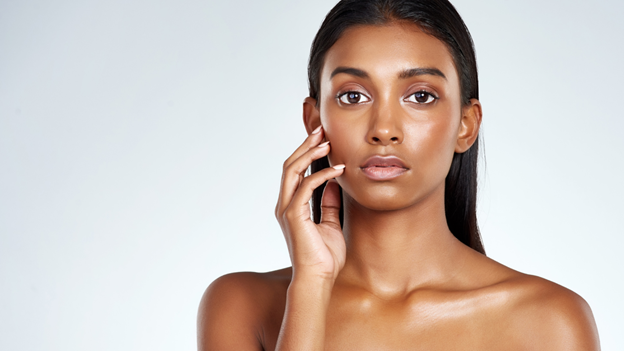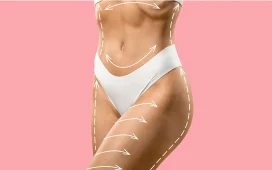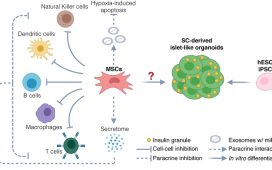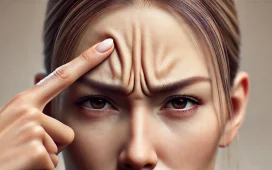When most people think of dermatology, they often picture acne creams, mole checks, and wrinkle-smoothing injections. And while these are common elements of a dermatologist’s toolkit, they barely scratch the surface of what modern dermatology has to offer.
Behind the scenes, dermatologists are using innovative, evidence-based treatments to address concerns you might not even realize are within their realm. From persistent sweat to thinning hair and even scar revision, dermatologists are equipped with tools to treat far more than just surface-level issues.
Here are five dermatologist-recommended dermatology treatments you might not know about — but could make a real difference in your skin health and overall well-being.
1. Botox for More Than Just Wrinkles
Botox is one of the most widely recognized cosmetic injectables, primarily used to reduce the appearance of fine lines and wrinkles. But beyond smoothing forehead creases and softening crow’s feet, Botox is FDA-approved to treat a range of medical conditions — many of which dermatologists handle regularly.
One of the lesser-known uses? Treating hyperhidrosis, or excessive sweating. For patients who struggle with chronic underarm sweating, damp palms, or overly sweaty feet, Botox can significantly reduce perspiration by blocking the nerve signals that trigger sweat glands.
It’s also used to help alleviate symptoms of bruxism (teeth grinding), which can lead to jaw pain and headaches. A few strategic Botox injections into the masseter muscle (the muscle used for chewing) can relieve tension and slim the lower face — a cosmetic and functional bonus.
2. Microneedling with PRP (Platelet-Rich Plasma)
Microneedling, sometimes known as “collagen induction therapy,” involves creating micro-injuries in the skin to stimulate its natural healing process. While many have heard of microneedling as a treatment for fine lines or acne scars, it becomes even more powerful when combined with platelet-rich plasma (PRP).
PRP is derived from your own blood, spun in a centrifuge to isolate growth factors and healing components. When applied to the skin immediately after microneedling, PRP enhances collagen production, reduces inflammation, and speeds up recovery time. The combination can lead to brighter, firmer, and more even-toned skin.
In addition to facial rejuvenation, PRP is increasingly used by dermatologists to treat hair thinning. Injecting PRP into the scalp can help stimulate dormant follicles and slow down hair loss — a breakthrough for both men and women facing early signs of balding.
3. Laser Treatment for Rosacea and Redness
Many people with persistent facial redness chalk it up to sensitive skin or aging. But conditions like rosacea, broken capillaries, or post-inflammatory erythema from acne can all cause lasting discoloration — and they don’t usually respond to over-the-counter skincare.
That’s where vascular lasers come in. Devices like the pulsed dye laser (PDL) or intense pulsed light (IPL) target blood vessels and pigment just below the skin’s surface, gently reducing redness over a series of sessions. These treatments are especially effective for flushing, visible veins around the nose and cheeks, and leftover red marks from old breakouts.
Because they’re non-invasive with minimal downtime, these laser treatments are an ideal option for patients looking to reduce facial redness without medication or harsh products.
4. Photodynamic Therapy (PDT) for Precancerous Skin Changes
Sun damage accumulates over time — and with it comes the risk of actinic keratoses, or rough, scaly patches on the skin that may develop into skin cancer if left untreated. While freezing with liquid nitrogen is a common method of removal, dermatologists also offer photodynamic therapy (PDT) as a more targeted and less abrasive alternative.
PDT involves applying a photosensitizing agent to the skin, allowing it to absorb, and then activating it with a specific light source. This combination selectively destroys damaged or precancerous cells while leaving healthy tissue untouched. The result is not only a lower skin cancer risk but also cosmetic improvement in skin tone and texture.
This treatment is especially popular for areas like the face, scalp, and hands, where patients want to avoid scarring or extensive recovery.
5. Fractional Laser Resurfacing for Scars and Texture
Whether from acne, surgery, or injury, scars can impact more than just your appearance — they can affect confidence and comfort. One advanced treatment that dermatologists often recommend for both new and old scars is fractional laser resurfacing.
Unlike fully ablative lasers that remove the top layers of skin, fractional lasers treat tiny columns of skin, leaving surrounding tissue intact. This promotes faster healing and less downtime while stimulating collagen in the deeper layers of the skin.
The procedure can be used on the face, chest, or even areas like the back and arms to improve texture, tone, and the appearance of raised or indented scars. Some patients also see improvement in pore size, fine lines, and overall skin brightness as a bonus.
Dermatology is a field that continues to innovate far beyond what most people expect. Whether you’re struggling with excessive sweating, hair loss, or residual scarring, chances are there’s a dermatologist-backed solution that can help — even if it doesn’t get as much attention as more traditional treatments.
Exploring lesser-known dermatology treatments with a board-certified provider can unlock options tailored to your specific needs, concerns, and skin goals. The more you understand what’s available, the more empowered you are to take charge of your skin health — and uncover solutions that make a lasting impact from the inside out.











